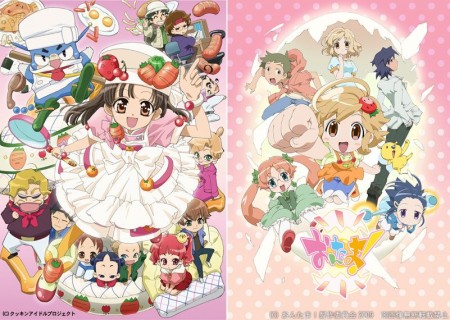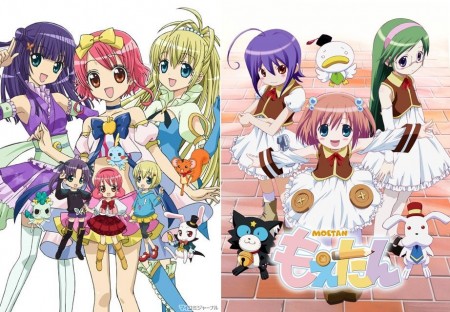Ask John: Is There a Difference Between Shoujo & Moé Character Designs?

Question:
What’s the difference between shoujo character designs for young girls and moé designs for male otaku?
Answer:
Actually, I theorize that there isn’t an appreciable difference in character design aesthetic or design goal between cute little girls intended for shoujo anime and cute little girls intended for otaku anime. The distinction, such as it is, derives from personality, characterization, and narrative focus rather than visual design. Such a theory can be supported by comparison of examples. The primary characters of contemporary shoujo anime such as Fushigi Boshi no Futago Hime and Cooking Idol Ai! Mai! Main! have exactly the same degree of plump, round cuteness as characters from Ontama! or Kanamemo.
Based on visual design alone, the cast of Jewelpet isn’t appreciably removed from the cast of Milky Holmes.
I’m not convinced that a fresh viewer could examine character designs from Himechen! Otogi Chikku Idol Lilpri and Moetan and distinguish which anime was the shoujo series for preadolescent girls and which was the risqué midnight anime for young men.
The distinction becomes even more confusing when considering anime series such as Anyamal Tantei Kiruminzu, Shugo Chara, or Heartcatch Precure that literally bridge the demographics of shoujo anime for young girls and otaku anime for adult men.
The division between shoujo anime and moé otaku anime is created by tone and emphasis rather than visual design. Shoujo anime focus on encouraging and motivating themes like becoming expressive, diligent, and responsible, and working hard to pursue one’s ambitions. Shoujo anime present characters for young girls to empathize with. Viewers that watch shoujo anime like Futago Hime, Cooking Idol, Shugo Chara, and Pretty Cure want to emulate those admirable characters. Moé anime is all about observing characters. The viewers that watch Lyrical Nanoha, Madoka Magica, Koihime Muso, and K-On don’t want to become just like the characters on screen; they want to adore the characters on screen. Magical girl anime for otaku, like Prisma Illya, Madoka Magica, and Lyrical Nanoha don’t propound themes like trying one’s best or making friends. These shows satirize, analyze, or escalate such traditional tropes of magical anime. Anime series like Cardcaptor Sakura and Pretty Cure use their narrative approach to literally blur the lines between shoujo and shounen or even seinen anime. Cardcaptor Sakura does introduce fundamental motivational shoujo anime tropes like hard work, loyalty, and responsibility. It’s consciously designed to provide a role-model for preadolescent girls. But Tomoyo’s fetishization of Sakura is a stand-in for the adult male viewer, bringing an otaku perspective into the shoujo universe. Similarly, the hybrid of conventional magical girl tropes with literal Dragon Ball Z-style martial arts action intentionally made the Pretty Cure franchise one that crosses over between shoujo and shounen anime styles. However, it is entirely the dramatic approach and content of Pretty Cure that reveals its demographic targets, not the character design.
Add a Comment
You must be logged in to post a comment.





It’s kind of like, how in the 90s, American fans would confuse female characters in shoujo w/ those in shonen.